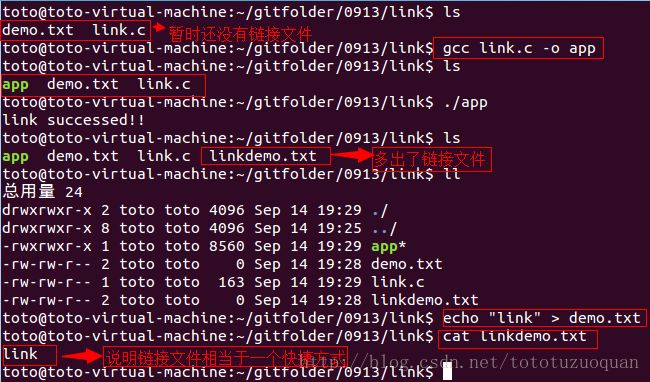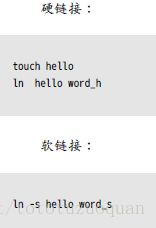- 深入解析Linux命令:创建目录mkdir的全面指南
梦幻南瓜
linuxlinux服务器运维
在Linux操作系统中,mkdir命令是创建目录的基础工具。无论是系统管理员还是普通用户,掌握mkdir的使用方法都是必不可少的。本文将详细解读mkdir命令的用法、选项及其在实际操作中的应用场景。1.mkdir命令的基本用法mkdir是“makedirectory”的缩写,用于在指定路径下创建新目录。其基本语法如下:mkdir[选项]目录名1.1创建单个目录最简单的用法是创建一个目录。例如,要在
- 【Linux指南】Linux系统 -权限全面解析
倔强的石头_
Linux指南linux服务器运维
引言本文从权限的本质概念出发,逐步拆解Linux系统中用户角色、文件权限标识、权限操作命令等核心要素,不仅深入解析chmod、chown等基础命令的底层逻辑,还会揭示目录权限的特殊规则与默认权限生成机制。无论你是初次接触Linux的新手,还是希望完善权限管理知识体系的系统管理员,都能通过本文构建从理论到实战的完整认知框架,最终掌握在复杂场景下精准配置权限的核心技能。文章目录引言一、Linux权限的
- 【Redis篇】数据库架构演进中Redis缓存的技术必然性—高并发场景下穿透、击穿、雪崩的体系化解决方案
奈斯DB
Redis专栏缓存redis数据库架构运维
《博主主页》:CSDN主页__奈斯DBIFClub社区主页__奈斯、《擅长领域》:擅长阿里云AnalyticDBforMySQL(分布式数据仓库)、Oracle、MySQL、Linux、prometheus监控;并对SQLserver、NoSQL(Redis)有了解如果觉得文章对你有所帮助,欢迎点赞收藏加关注作为DBA或运维在日常与Redis打交道时,往往更关注部署安装、Key清理、内存回收、备份
- Prometheus+node_exporter+grafana监控部署(上)
努力爬的小菜鸟
Linuxprometheusgrafanalinux
目录一、部署Prometheus二、部署node_exporter三、把node_exporter加载进Prometheus四、部署grafana一、部署Prometheus1、从官网下载好Prometheus的安装包2、解压tarxfprometheus-2.41.0.linux-amd64.tar.gz3、做个软链方便更新ln-svprometheus-2.41.0.linux-amd64pr
- Linux部署Milvus数据库及Attu UI工具完全指南
一、准备工作1.1环境要求操作系统:Ubuntu20.04/Debian11/CentOS7+硬件配置:至少8GB内存,4核CPU,50GB磁盘空间网络要求:可访问互联网(用于拉取Docker镜像)1.2安装Docker和DockerCompose1.2.1安装Dockersudoapt-getupdatesudoapt-getinstall-ydocker.iosudosystemctlstar
- Docker HAproxy 配置 & rsyslog 日志处理
环境CentOSLinuxrelease7.9.2009(Core)HAProxyversion2.3.6-7851701,released2021/03/03IP:192.168.0.1Docker安装Docker安装建立haproxy配置文件#新建目录mkdir-p/etc/haproxy#备份配置文件cp/etc/haproxy/haproxy.cfg/etc/haproxy/haproxy
- Python.03
唯怡委员
python
1.技术面试题(1)解释Linux中的进程、线程和守护进程的概念,以及如何管理它们?答:进程是Linux中资源分配的基本单位,代表程序在内存中的执行实例,拥有独立的地址空间和系统资源。通过ps、top命令查看,kill命令终止,或使用systemctl管理服务进程。线程是进程内的轻量级执行单元,共享进程资源(如内存),切换开销小。Linux通过POSIX线程(pthread)库实现,可用htop查
- Python.01
唯怡委员
python
Python.011.技术面试题(1)TCP与UDP的区别是什么?(2)DHCP和DNS的作用是什么?(3)简述Linux文件系统的目录结构,其中/boot、/var、/usr目录的作用分别是什么?(4)Linux系统突然无法访问外网,但内网通信正常。请列出至少5个可能的故障点及排查步骤。2.HR面试题(1)假如你成功入职,却发现直属领导能力远不如你,你会如何与他共事?(2)你简历上的经历并不突出
- 太强了!这款命令行工具可以在 Linux 文件目录快速自动跳转
杰哥的IT之旅
作者:JackTian文章首发于公众号:【杰哥的IT之旅】在Linux终端下,跳转目录有时觉得会很麻烦,需要敲很长的命令路径才能进入指定的目录。autojump是提供了一种快速进行文件目录自动跳转的命令行工具。它会将命令行最常用的目录记录保存到数据库里,所以在使用它时,必须先访问目录,然后才能跳转到所要进入的目录。它会根据访问的目录频次添加不同的权重,访问的目录越频繁,权重越高,排名就越靠前,跳转
- 手动搭建PHP环境:步步为营,解锁Web开发
奔跑吧邓邓子
项目攻略php手动搭建php环境
目录一、引言二、准备工作2.1明确所需软件2.2下载软件三、Windows系统搭建步骤3.1安装Apache服务器3.2安装PHP3.3集成Apache与PHP3.4安装MySQL3.5配置PHP连接MySQL四、Linux系统搭建步骤(以Ubuntu为例)4.1更新系统4.2安装Apache4.3安装MySQL或MariaDB4.4安装PHP及其扩展五、macOS系统搭建步骤5.1安装Homeb
- Linux系统修改时区以及校准时间
Linux系统修改时区以及校准时间修改时区(切换到root用户下执行suroot)删除系统自带的loacltime的文件rm-f/etc/loacltime将系统内置的时区文件Shanghai软连接到/etc/localtime(建议直接复制执行)ln-s/usr/share/zoneinfo/Asia/Shanghai/etc/localtime这个时候,就已经修改成功了,可以执行date看一下
- Linux 交叉编译分享
Mr_-G
编程入门Linux底层软件开发linux运维服务器交叉编译嵌入式底层软件
一、交叉编译的基本概念与应用场景1.1交叉编译的定义交叉编译是指在一个操作系统平台上编译出能在另一个不同架构或操作系统平台上运行的程序的过程。通俗地说,就是"在A机器上编译出能在B机器上运行的程序",其中A和B的硬件架构、操作系统可能完全不同。在传统的本地编译中,编译环境与运行环境是一致的,例如在x86_64的Linux系统上编译并运行程序。而交叉编译的核心特点在于编译环境与目标运行环境的分离,这
- Rust 开发环境搭建与插件
pumpkin84514
rustrust开发语言后端
生成完整文章用户请求写一篇完整的CSDN文章,要求根据之前的建议生成。文章要包含结构清晰、标题、代码示例、常见提示、跨平台Rust工具链安装差异等内容。文章需准确,包括插件和使用提示,CLI程序示例等。主要内容包括:介绍、Rust工具链安装(Windows/macOS/Linux差异)、VSCode安装与扩展列表、扩展细节与使用、开发者常见提示(如rust-analyzer功能、crate使用等)
- 第二章 Linux常用命令及使用
胖虎大魔王
目录操作cdusr/:切换到该目录下usr目录cd..:切换到上一层目录cd/:切换到系统根目录mkdir:目录名称创建目录ls:目录名称查询该目录下所有的目录和文件ls[-a]:目录名称查询该目录下所有的目录和文件,包含隐藏文件ls[-l]:目录名称查询该目录下所有的目录和文件的详细信息find/-name:目录名称查找/root下的目录(文件)mv:目录名称新目录名称修改目录名称mv:目录名称
- python的pywebview库结合Flask和waitress开发桌面应用程序简介
czliutz
python笔记pythonflask开发语言
pywebview的用途与特点用途pywebview是一个轻量级Python库,用于创建桌面应用程序(GUI)。它通过嵌入Web浏览器组件(如Windows的Edge/IE、macOS的WebKit、Linux的GTKWebKit),允许开发者使用HTML/CSS/JavaScript构建界面,并用Python处理后端逻辑。这种方式结合了Web技术的灵活性和Python的强大功能,适合快速开发跨平
- Rust交叉编译自动化实战
告别手动编译地狱!用GitLabRunner让Rust程序跨平台自动构建还在为不同平台手动编译Rust程序而烦恼?还在为环境配置不一致而抓狂?今天带你解锁Rust交叉编译的自动化大法,让你的CI/CD流水线飞起来!痛点在哪里?作为一个Rust开发者,你是否遇到过这些让人头疼的问题:平台差异:在Mac上开发,部署到Linux服务器,每次都要手动交叉编译环境配置:依赖库版本不一致,OpenSSL找不到
- Windows安装子系统部署服务并实现外部访问,WSL安装Ubuntu、CentOS、openEuler子系统,最全保姆级教程,手把手教会你。
Mr.L-OAM
linux系统运维服务器运维
1环境准备1.1系统设置打开powershellwin+r输入poweroff如果后面操作提示需要提升权限,此处在搜索栏输入powershell右键以管理员身份运行官网文档1.1.1适用于Linux的Windows子系统dism.exe/online/enable-feature/featurename:Microsoft-Windows-Subsystem-Linux/all
- Linux Ubuntu安装教程|附安装文件➕安装教程
仰望天空—永强
软件工程数学建模硬件工程linuxpython
[软件名称]:LinuxUbuntu18.0[软件大小]:1.8GB[安装环境]:VMware[夸克网盘接]链接:https://pan.quark.cn/s/971f685256ef(建议用手机保存到网盘后,再用电脑下载)更多免费软件见https://docs.qq.com/sheet/DRkdWVFFCWm9UeGJP
- Linux 0.01源码深入解析
羊迪
本文还有配套的精品资源,点击获取简介:Linux0.01源码代表了Linux操作系统的起点,揭示了其基本架构和内核设计原理。通过源码分析,开发者可以了解早期的进程管理、内存管理、文件系统、设备驱动、中断处理、系统调用等关键概念。此外,源码还展现了如何进行编译和构建,为想要深入理解操作系统和开源精神的开发者提供了一份宝贵的学习资源。1.Linux0.01源码概述Linux操作系统的核心是其内核,而L
- Linux应用软件编程(多任务:进程2)
04aaaze
linux运维服务器
一.进程消亡1.进程退出(1)从main函数return退出进程(2)exit,_exit,_Exitexit:退出进程会刷新缓冲区(库函数)_exit,_Exit:系统调用,退出进程不会刷新缓冲区voidexit(intstatus);void_exit(intstatus);void_Exit(intstatus);功能:退出一个进程参数:status:退出时的状态值(可以传递给父进程)EXI
- Foldseek快速蛋白质结构比对
1.下载和安装Foldseek如果只是单个蛋白质结构的序列比对,我们只需要用Foldseek的网站服务https://search.foldseek.com/search上传我们的蛋白质结构并选择想要进行比对的数据库即可,这里不做重点讲解。做生物信息学研究,我们难免需要批量对多个目标蛋白进行大规模结构比对,这需要我们下载安装本地版软件。Foldseek有Linux和MacOS二个版本的本地软件(这
- Linux:线程同步之信号量
还下着雨ZG
Linux杂谈linux
信号量(1)What(什么是信号量)提供一种计数器的方式控制对共享资源的访问;当计数器大于0时,请求资源成功并计数器-1;当计数器小于0时,线程阻塞,等待其它线程执行signal(V操作)唤醒它(2)Why(信号量的作用)实现线程的同步与互斥:通过信号量的设计,可以实现对共享资源的串行访问实现线程的等待与通知机制:当信号量小于0时,当前线程将被阻塞;当信号量大于0时,会唤醒一个阻塞在信号量上的线程
- tar排除特定文件
hi error.cn
前端服务器数据库经验分享
tar排除特定文件在Linux系统中,tar命令是一个非常强大的工具,用于归档和压缩文件或目录。有时候,你可能需要在创建归档文件时排除某些特定的文件或者目录。本文将详细介绍如何使用tar命令来排除特定文件。1.使用--exclude参数tar命令中常用的参数之一是--exclude,它可以用来指定要从归档中排除的文件或目录。基本格式如下:tar[选项]--exclude='模式'-czvf归档文件
- 14 款命令行常用工具的替代品!
杰哥的IT之旅
作者:JackTian文章首发于公众号:【杰哥的IT之旅】大家好,我是杰哥。在Linux操作系统下,ls(list)可以说是我们日常使用率较高的命令了,它主要用来显示目标列表,输出信息可以进行彩色加亮显示,以分区不同类型的文件。关于ls[^1]的语法、选项、实例、扩展知识,这里就不详细介绍了。一、lsdlsd[^2]是一个基于Rust语言编写的ls命令替代品,增加了颜色、图标、树视图、更多格式选项
- Shell 脚本编程全面学习指南
前言Shell脚本编程是Linux和Unix系统管理、自动化任务的核心工具之一。通过Shell脚本,你可以自动化重复性操作、简化复杂流程、提高系统管理效率,甚至构建完整的自动化运维工具。本文将带你从基础到进阶,全面学习Shell脚本编程,涵盖语法、结构、调试、最佳实践等内容。一、Shell简介与环境搭建1.1什么是Shell?Shell是命令行解释器,是用户与操作系统内核之间的桥梁。它接收用户输入
- MySQL(147)如何进行跨平台迁移?
辞暮尔尔-烟火年年
mysqladb数据库
跨平台迁移涉及将数据库从一个操作系统或平台迁移到另一个,例如从Windows迁移到Linux,或从不同架构的硬件之间进行迁移。这个过程比同平台迁移更加复杂,需要特别注意数据库的兼容性、数据编码、文件路径等问题。以下是一步一步的指导,详细介绍如何进行跨平台数据库迁移。一、准备工作1.确认源与目标平台源平台:当前运行数据库的操作系统和硬件平台。目标平台:新的操作系统和硬件平台。2.安装数据库软件在目标
- 磁盘性能测试参数
平凡之路001
LINUX性能测试参数:•测试随机写IOPS:fio-direct=1-iodepth=128-rw=randwrite-ioengine=libaio-bs=4k-size=1G-numjobs=1-runtime=1000-group_reporting-filename=iotest-name=Rand_Write_Testing•测试随机读IOPS:fio-direct=1-iodepth
- 从零开始学 Linux:循序渐进的学习指南
我爱学嵌入式
Linux基础linux服务器
Linux作为一款开源、稳定且安全的操作系统,在服务器领域、嵌入式开发、云计算等场景中占据着举足轻重的地位。对于程序员、运维工程师或IT爱好者而言,掌握Linux技能已成为一项核心竞争力。但面对命令行界面和复杂的系统架构,很多初学者往往感到无从下手。本文将为你梳理一条清晰的Linux学习路径,助你从入门到精通。一、明确学习目标:为什么学Linux?学习Linux前需明确目标,不同目标对应不同的学习
- C#程序唯一性守护:用互斥锁(Mutex)实现进程级安全控制的实战指南
为什么程序重复启动是个"毒瘤"?在软件开发中,程序重复启动可能导致以下灾难性后果:资源冲突:多个实例争夺数据库连接、文件句柄等有限资源数据污染:并发写入配置文件导致内容错乱界面混乱:多个窗口同时弹出,用户体验崩坏安全漏洞:恶意程序通过伪造实例窃取数据而互斥锁(Mutex)是Windows/Linux系统提供的原生机制,能完美解决这些问题。相比文件锁、注册表标记等传统方案,Mutex具有以下不可替代
- linux如何使用jstack分析线程状态
ycllycll
linux
在高并发,多线程环境下的java程序经常需要分析线程状态,本本是一个分析步骤无具体讲解(具体命令可自行google学习)一般流程:1.使用jps-l查看有哪些java程序在运行2.使用top查看步骤1中进程号(pid或者vmid)所占用cpu以及内存情况(或者省略步骤1)3.使用top-Hppid查看具体该pid下各个线程所占用的cpu情况(进程下的线程有一个nid,后面需要用到)4.使用jsta
- redis学习笔记——不仅仅是存取数据
Everyday都不同
returnSourceexpire/delincr/lpush数据库分区redis
最近项目中用到比较多redis,感觉之前对它一直局限于get/set数据的层面。其实作为一个强大的NoSql数据库产品,如果好好利用它,会带来很多意想不到的效果。(因为我搞java,所以就从jedis的角度来补充一点东西吧。PS:不一定全,只是个人理解,不喜勿喷)
1、关于JedisPool.returnSource(Jedis jeids)
这个方法是从red
- SQL性能优化-持续更新中。。。。。。
atongyeye
oraclesql
1 通过ROWID访问表--索引
你可以采用基于ROWID的访问方式情况,提高访问表的效率, , ROWID包含了表中记录的物理位置信息..ORACLE采用索引(INDEX)实现了数据和存放数据的物理位置(ROWID)之间的联系. 通常索引提供了快速访问ROWID的方法,因此那些基于索引列的查询就可以得到性能上的提高.
2 共享SQL语句--相同的sql放入缓存
3 选择最有效率的表
- [JAVA语言]JAVA虚拟机对底层硬件的操控还不完善
comsci
JAVA虚拟机
如果我们用汇编语言编写一个直接读写CPU寄存器的代码段,然后利用这个代码段去控制被操作系统屏蔽的硬件资源,这对于JVM虚拟机显然是不合法的,对操作系统来讲,这样也是不合法的,但是如果是一个工程项目的确需要这样做,合同已经签了,我们又不能够这样做,怎么办呢? 那么一个精通汇编语言的那种X客,是否在这个时候就会发生某种至关重要的作用呢?
&n
- lvs- real
男人50
LVS
#!/bin/bash
#
# Script to start LVS DR real server.
# description: LVS DR real server
#
#. /etc/rc.d/init.d/functions
VIP=10.10.6.252
host='/bin/hostname'
case "$1" in
sta
- 生成公钥和私钥
oloz
DSA安全加密
package com.msserver.core.util;
import java.security.KeyPair;
import java.security.PrivateKey;
import java.security.PublicKey;
import java.security.SecureRandom;
public class SecurityUtil {
- UIView 中加入的cocos2d,背景透明
374016526
cocos2dglClearColor
要点是首先pixelFormat:kEAGLColorFormatRGBA8,必须有alpha层才能透明。然后view设置为透明glView.opaque = NO;[director setOpenGLView:glView];[self.viewController.view setBackgroundColor:[UIColor clearColor]];[self.viewControll
- mysql常用命令
香水浓
mysql
连接数据库
mysql -u troy -ptroy
备份表
mysqldump -u troy -ptroy mm_database mm_user_tbl > user.sql
恢复表(与恢复数据库命令相同)
mysql -u troy -ptroy mm_database < user.sql
备份数据库
mysqldump -u troy -ptroy
- 我的架构经验系列文章 - 后端架构 - 系统层面
agevs
JavaScriptjquerycsshtml5
系统层面:
高可用性
所谓高可用性也就是通过避免单独故障加上快速故障转移实现一旦某台物理服务器出现故障能实现故障快速恢复。一般来说,可以采用两种方式,如果可以做业务可以做负载均衡则通过负载均衡实现集群,然后针对每一台服务器进行监控,一旦发生故障则从集群中移除;如果业务只能有单点入口那么可以通过实现Standby机加上虚拟IP机制,实现Active机在出现故障之后虚拟IP转移到Standby的快速
- 利用ant进行远程tomcat部署
aijuans
tomcat
在javaEE项目中,需要将工程部署到远程服务器上,如果部署的频率比较高,手动部署的方式就比较麻烦,可以利用Ant工具实现快捷的部署。这篇博文详细介绍了ant配置的步骤(http://www.cnblogs.com/GloriousOnion/archive/2012/12/18/2822817.html),但是在tomcat7以上不适用,需要修改配置,具体如下:
1.配置tomcat的用户角色
- 获取复利总收入
baalwolf
获取
public static void main(String args[]){
int money=200;
int year=1;
double rate=0.1;
&
- eclipse.ini解释
BigBird2012
eclipse
大多数java开发者使用的都是eclipse,今天感兴趣去eclipse官网搜了一下eclipse.ini的配置,供大家参考,我会把关键的部分给大家用中文解释一下。还是推荐有问题不会直接搜谷歌,看官方文档,这样我们会知道问题的真面目是什么,对问题也有一个全面清晰的认识。
Overview
1、Eclipse.ini的作用
Eclipse startup is controlled by th
- AngularJS实现分页功能
bijian1013
JavaScriptAngularJS分页
对于大多数web应用来说显示项目列表是一种很常见的任务。通常情况下,我们的数据会比较多,无法很好地显示在单个页面中。在这种情况下,我们需要把数据以页的方式来展示,同时带有转到上一页和下一页的功能。既然在整个应用中这是一种很常见的需求,那么把这一功能抽象成一个通用的、可复用的分页(Paginator)服务是很有意义的。
&nbs
- [Maven学习笔记三]Maven archetype
bit1129
ArcheType
archetype的英文意思是原型,Maven archetype表示创建Maven模块的模版,比如创建web项目,创建Spring项目等等.
mvn archetype提供了一种命令行交互式创建Maven项目或者模块的方式,
mvn archetype
1.在LearnMaven-ch03目录下,执行命令mvn archetype:gener
- 【Java命令三】jps
bit1129
Java命令
jps很简单,用于显示当前运行的Java进程,也可以连接到远程服务器去查看
[hadoop@hadoop bin]$ jps -help
usage: jps [-help]
jps [-q] [-mlvV] [<hostid>]
Definitions:
<hostid>: <hostname>[:
- ZABBIX2.2 2.4 等各版本之间的兼容性
ronin47
zabbix更新很快,从2009年到现在已经更新多个版本,为了使用更多zabbix的新特性,随之而来的便是升级版本,zabbix版本兼容性是必须优先考虑的一点 客户端AGENT兼容
zabbix1.x到zabbix2.x的所有agent都兼容zabbix server2.4:如果你升级zabbix server,客户端是可以不做任何改变,除非你想使用agent的一些新特性。 Zabbix代理(p
- unity 3d还是cocos2dx哪个适合游戏?
brotherlamp
unity自学unity教程unity视频unity资料unity
unity 3d还是cocos2dx哪个适合游戏?
问:unity 3d还是cocos2dx哪个适合游戏?
答:首先目前来看unity视频教程因为是3d引擎,目前对2d支持并不完善,unity 3d 目前做2d普遍两种思路,一种是正交相机,3d画面2d视角,另一种是通过一些插件,动态创建mesh来绘制图形单元目前用的较多的是2d toolkit,ex2d,smooth moves,sm2,
- 百度笔试题:一个已经排序好的很大的数组,现在给它划分成m段,每段长度不定,段长最长为k,然后段内打乱顺序,请设计一个算法对其进行重新排序
bylijinnan
java算法面试百度招聘
import java.util.Arrays;
/**
* 最早是在陈利人老师的微博看到这道题:
* #面试题#An array with n elements which is K most sorted,就是每个element的初始位置和它最终的排序后的位置的距离不超过常数K
* 设计一个排序算法。It should be faster than O(n*lgn)。
- 获取checkbox复选框的值
chiangfai
checkbox
<title>CheckBox</title>
<script type = "text/javascript">
doGetVal: function doGetVal()
{
//var fruitName = document.getElementById("apple").value;//根据
- MySQLdb用户指南
chenchao051
mysqldb
原网页被墙,放这里备用。 MySQLdb User's Guide
Contents
Introduction
Installation
_mysql
MySQL C API translation
MySQL C API function mapping
Some _mysql examples
MySQLdb
- HIVE 窗口及分析函数
daizj
hive窗口函数分析函数
窗口函数应用场景:
(1)用于分区排序
(2)动态Group By
(3)Top N
(4)累计计算
(5)层次查询
一、分析函数
用于等级、百分点、n分片等。
函数 说明
RANK() &nbs
- PHP ZipArchive 实现压缩解压Zip文件
dcj3sjt126com
PHPzip
PHP ZipArchive 是PHP自带的扩展类,可以轻松实现ZIP文件的压缩和解压,使用前首先要确保PHP ZIP 扩展已经开启,具体开启方法就不说了,不同的平台开启PHP扩增的方法网上都有,如有疑问欢迎交流。这里整理一下常用的示例供参考。
一、解压缩zip文件 01 02 03 04 05 06 07 08 09 10 11
- 精彩英语贺词
dcj3sjt126com
英语
I'm always here
我会一直在这里支持你
&nb
- 基于Java注解的Spring的IoC功能
e200702084
javaspringbeanIOCOffice
- java模拟post请求
geeksun
java
一般API接收客户端(比如网页、APP或其他应用服务)的请求,但在测试时需要模拟来自外界的请求,经探索,使用HttpComponentshttpClient可模拟Post提交请求。 此处用HttpComponents的httpclient来完成使命。
import org.apache.http.HttpEntity ;
import org.apache.http.HttpRespon
- Swift语法之 ---- ?和!区别
hongtoushizi
?swift!
转载自: http://blog.sina.com.cn/s/blog_71715bf80102ux3v.html
Swift语言使用var定义变量,但和别的语言不同,Swift里不会自动给变量赋初始值,也就是说变量不会有默认值,所以要求使用变量之前必须要对其初始化。如果在使用变量之前不进行初始化就会报错:
var stringValue : String
//
- centos7安装jdk1.7
jisonami
jdkcentos
安装JDK1.7
步骤1、解压tar包在当前目录
[root@localhost usr]#tar -xzvf jdk-7u75-linux-x64.tar.gz
步骤2:配置环境变量
在etc/profile文件下添加
export JAVA_HOME=/usr/java/jdk1.7.0_75
export CLASSPATH=/usr/java/jdk1.7.0_75/lib
- 数据源架构模式之数据映射器
home198979
PHP架构数据映射器datamapper
前面分别介绍了数据源架构模式之表数据入口、数据源架构模式之行和数据入口数据源架构模式之活动记录,相较于这三种数据源架构模式,数据映射器显得更加“高大上”。
一、概念
数据映射器(Data Mapper):在保持对象和数据库(以及映射器本身)彼此独立的情况下,在二者之间移动数据的一个映射器层。概念永远都是抽象的,简单的说,数据映射器就是一个负责将数据映射到对象的类数据。
&nb
- 在Python中使用MYSQL
pda158
mysqlpython
缘由 近期在折腾一个小东西须要抓取网上的页面。然后进行解析。将结果放到
数据库中。 了解到
Python在这方面有优势,便选用之。 由于我有台
server上面安装有
mysql,自然使用之。在进行数据库的这个操作过程中遇到了不少问题,这里
记录一下,大家共勉。
python中mysql的调用
百度之后能够通过MySQLdb进行数据库操作。
- 单例模式
hxl1988_0311
java单例设计模式单件
package com.sosop.designpattern.singleton;
/*
* 单件模式:保证一个类必须只有一个实例,并提供全局的访问点
*
* 所以单例模式必须有私有的构造器,没有私有构造器根本不用谈单件
*
* 必须考虑到并发情况下创建了多个实例对象
* */
/**
* 虽然有锁,但是只在第一次创建对象的时候加锁,并发时不会存在效率
- 27种迹象显示你应该辞掉程序员的工作
vipshichg
工作
1、你仍然在等待老板在2010年答应的要提拔你的暗示。 2、你的上级近10年没有开发过任何代码。 3、老板假装懂你说的这些技术,但实际上他完全不知道你在说什么。 4、你干完的项目6个月后才部署到现场服务器上。 5、时不时的,老板在检查你刚刚完成的工作时,要求按新想法重新开发。 6、而最终这个软件只有12个用户。 7、时间全浪费在办公室政治中,而不是用在开发好的软件上。 8、部署前5分钟才开始测试。


